|
|

05-25-2016, 12:00 PM
|
|
Senior Member
|
|
Join Date: Mar 2014
Location: Plano, TX
Posts: 160
Thanks: 6
Thanked 67 Times in 33 Posts
|
|
 Vorshlag 5th Gen Camaro Development Thread
Vorshlag 5th Gen Camaro Development Thread
Disclaimer: Some folks see our forum threads as unwanted advertising. I'm not selling anything in this thread, just showing what we've learned on the 5th gen Camaros over the past few years. Yes, we are developing parts that will eventually be for sale... that's what development is all about. And yes, our pictures are watermarked with our logo, and I can understand how that might come off as "salesy", but we just don't want our images stolen or used without our permission. We cannot afford to sponsor every forum we post on, and we will strive to "walk that line" and not step on any other vendors toes here. I hope we can share enough tech to warrant this thread on Lateral-G. Thanks.  Chassis Development Thread for 5th Gen Camaro:
Chassis Development Thread for 5th Gen Camaro: In this thread we will discuss the development, testing, racing and parts we have worked with on the 5th gen Camaro. Admittedly we were a "bit late to the party" for the 5th gen, but we have our reasons. While we made our first suspension parts for the 2010-15 Camaro "Zeta" chassis back in 2012, we just never saw a whole heck of a lot of these cars at autocross or track events until the last few years.
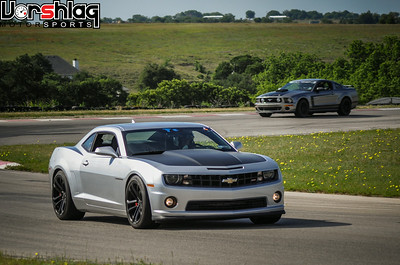 
The "track guy in a Camaro" market has been pretty small, so we didn't jump onto this chassis as early as we did with others cars. While the 5th Gen and the S197 Mustangs sold in similar numbers, we would easily see 10-30 times as many S197 Mustangs at track events and autocrosses (which makes up our customer base), so our development efforts went into the S197 chassis first.
 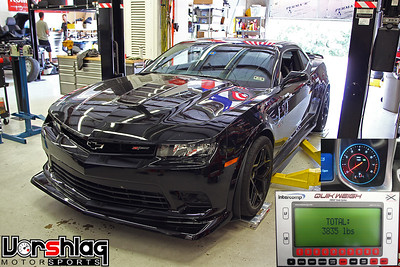
Lately it seems that used car 5th Gen SS model prices have become more attractive, so we're seeing finally more and more of these cars on track. Admittedly these cars have some known faults - namely higher weight and poor visibility from inside, compared to the same year Mustangs. And no, we don't consider the Challenger a "challenger" to either of these pony cars. For every Challenger we've seen at a track day or autocross we've seen 300 Mustangs and 10 Camaros!
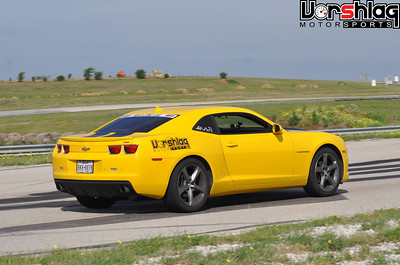 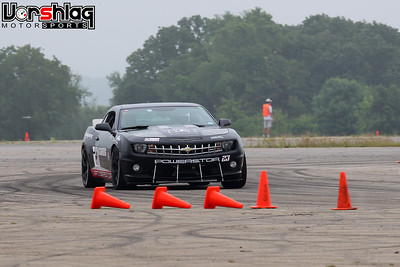
I will be the first to admit - We are still learning more and more about this Zeta platform Camaro as I write this in 2016. We know there are other shops that have more experience with this chassis, but many if not most of those are concentrated more on straight line performance. Here in this thread we will concentrate on the road course and autocross potential of the 2010-15 Camaro SS, 1LE and Z/28.
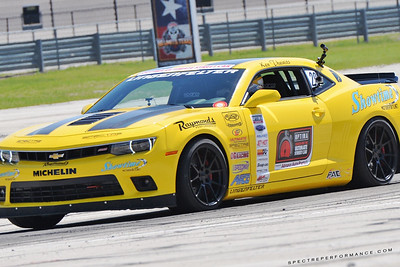 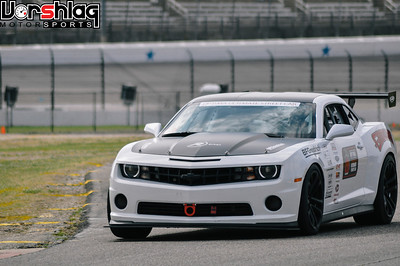
The Optima/USCA series is somewhat unique and there are a few big names really pushing the 5th gen Camaros there. I'd venture to guess that two of the most heavily funded efforts in Optima history are 5th gen Camaros. Of course it is that car's LS series V8 that makes this car popular with that crowd, but that's not at all a bad reason to like these cars! The 6.2L LS3 engine in the SS and 1LE has TONS of upgrade potential, especially when compared to the Coyote 5.0 used in the 2011-14 Mustang GT and Boss302 (those cannot gain the displacement or power of the LS series engines).
 
Back in 2012 we made a camber plate for the 5th gen, which was tested on the LG Motorsports GTS race car that ran in Pirelli World Challenge. Our prototype design started with an OEM 2011 Camaro strut tower, then we modeled the curvature of the tower with clay, took a bunch of measurements from the cast shape, made a 3D printed design to check fitment, then had a prototype machined in aluminum by an outside shop.
 
Since then we've learned that this is not exactly the most efficient way to create a prototype camber plate. And while it may seem that 3D scanning or CMM measuring the tower would be easier, the costs associated with those technologies are still in the 5 to 6 figure range for anything we can use with the level of accuracy we need.
continued below

|

05-25-2016, 12:01 PM
|
|
Senior Member
|
|
Join Date: Mar 2014
Location: Plano, TX
Posts: 160
Thanks: 6
Thanked 67 Times in 33 Posts
|
|

continued from above
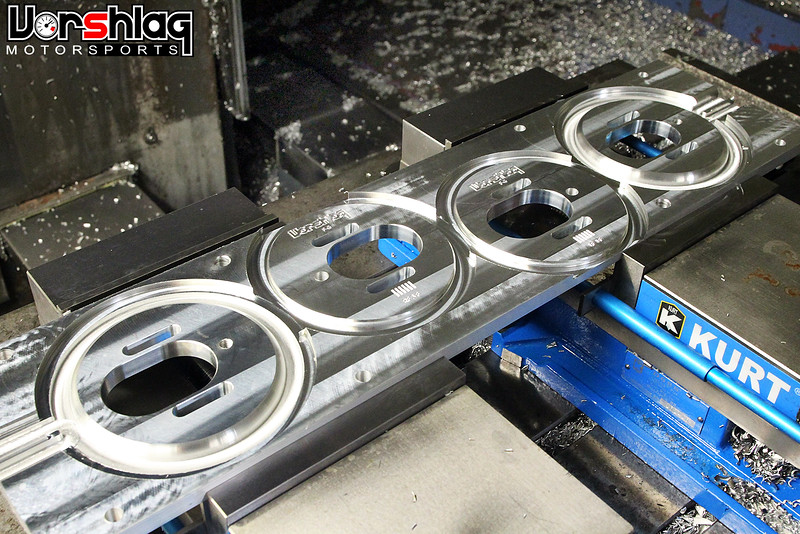
Since late 2014 we have had our own in-house CNC machines which has helped us to dramatically shorten our development cycle - now we skip the 3D modeling phase completely, and of course do not have to wait on an outside machine shop. This has cut development time down from weeks to hours. Example: we made a new camber plate for the 2015 Mustang S550 chassis in 48 hours, from the time the car rolled into our shop to the time it we had production quality camber plates installed.
 
This rapid machining process was replicated in 2016 with our customer "Scottish" Joe's 2013 Camaro 1LE. There were some issues we needed to improve on our original prototype 5th gen plates we made for the LGM race car which we remedied on the pre-production set for Joe's Camaro earlier this year.
 
Chevrolet also added a strut tower brace on some models that wasn't present on the 2010-11 cars, so the shape of our plate was changed to fit around that. The camber plate itself is a fairly straightforward affair - two plates (with more intricate shapes than seen here) sandwich the top of the strut tower. To adjust camber our "spherical bearing holder" slides in and outboard relative to this sandwich. There is no caster adjustment in our design, and the other designs we've seen only change caster by rotating the main plate (which will change caster and camber concurrently). We made it this way for a reason - this chassis has plenty of caster and needs all of the camber adjustment (and easy track side re-adjustment) it can get.
We have a production batch of 5th gen plates being machined here later this week, along with a new OEM spring perch option to go along with the 3 coilover spring perch sizes we offer for this car now. I'll show some red anodized, production pieces in my next post.
WHAT'S NEXT?
I'm trying to keep this first post brief and will cover more of our parts development and testing in future posts. We've tested Bilstein PSS10s on these cars, made custom brake cooling backing plates and inlets, fitted 19x11" Forgestars and 305mm tires at all four corners, installed Cobra racing seats, full length headers, brake pads, and more. We've learned several tricks along the way that I will share, too.
 
If you are new to Vorshlag build threads you will soon realize we post a lot of pictures and videos - and almost all of my pictures here can be clicked on to see higher rez versions. Pictures speak a 1000 words, and videos even more.
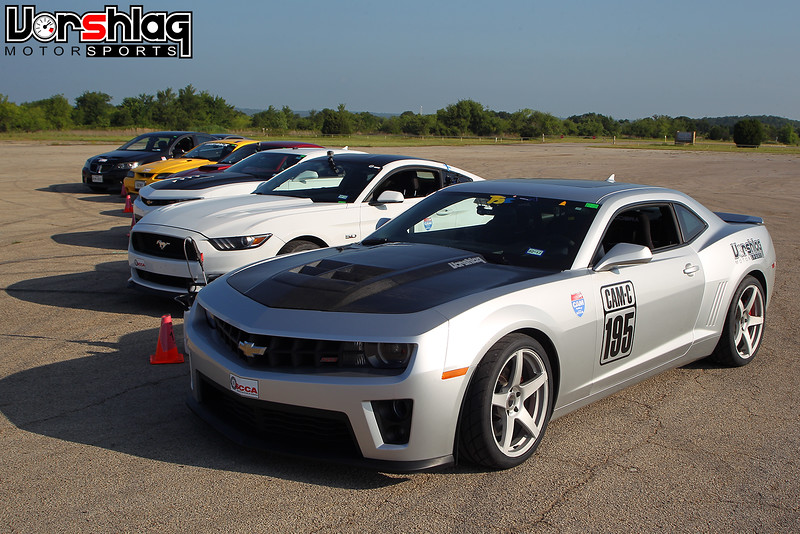
We have also done a few CAM class autocross events in Joe's 1LE and had a great showing at the 2016 Texas CAM Challenge, which was held last weekend. I will talk more about these events + some upcoming track tests in my next posts.
Cheers,
__________________
Terry Fair @ Vorshlag Motorsports
|

05-28-2016, 06:37 AM
|
 |
Senior Member
|
|
Join Date: Sep 2005
Location: so cal
Posts: 1,772
Thanks: 0
Thanked 0 Times in 0 Posts
|
|
Keep the updates coming. I appreciate the detail of your builds.
|

05-28-2016, 08:12 AM
|
 |
Lateral-g Supporting Member
|
|
Join Date: Jun 2005
Posts: 8,393
Thanks: 5,433
Thanked 1,937 Times in 1,047 Posts
|
|
Subscribed.
And thank you for sharing
Marty-MJ
|

05-28-2016, 01:54 PM
|
 |
Senior Member
|
|
Join Date: Dec 2006
Location: Wichita Kansas
Posts: 1,269
Thanks: 5
Thanked 7 Times in 7 Posts
|
|
Whom ever is upset about your threads is dumb. Great tech and good development infomation. Thanks and keep posting.
__________________
Mike your friendly USAF B-1 CREW CHIEF
72 Chevy Nova in pieces trying to rebulid this bucket of bolts (really just a labor of love)
Crew Chief's: Helping pilots get laid since 1947
|

06-26-2016, 09:23 PM
|
 |
Lateral-g Supporting Member
|
|
Join Date: Jun 2005
Posts: 8,393
Thanks: 5,433
Thanked 1,937 Times in 1,047 Posts
|
|
|

10-14-2016, 08:17 AM
|
|
Senior Member
|
|
Join Date: Mar 2014
Location: Plano, TX
Posts: 160
Thanks: 6
Thanked 67 Times in 33 Posts
|
|

Thread Update Sept 19, 2016: We have done a number of upgrades to our tester Joe's 2013 1LE Camaro this year. After testing a revised version on it, we made a production run of 5th gen Camaro camber plates. Since then many have been been sold to racers. Over the summer I raced this Camaro in two autocross events in the CAM class, then this past weekend I was able to get my first track laps in the car. I also made laps in a 2017 C7 Corvette Grand Sport and a 2012 C6 Corvette Z06 that same day. Compared to these two "sports cars" this 3800 pound Camaro gave some very surprising results! Video and data is below.
As I mentioned in my last post, Vorshlag has worked on maybe a dozen 5th gens in the past 4 years, but recently we have been digging deeper under the skin. Joe's '13 1LE has really given us an opportunity to try a few things and I wanted to share some here.
The 6th Gen Camaro is better in almost every way, and I can't wait to tear into one of those. I damn near bought one, and I'm still seriously tempted. But as the 6th gens become more prevalent, used prices continued to fall on the "forgotten pony car" 5th gen, and we are starting to see more and more of them at track events - especially Optima events.
F-STREET POPULARITY + WHERE DID THEY GO?
SCCA has a category called "Street" (formerly "Stock) where, for a few years, the 5th gen Camaro saw enormous popularity with autocrossers. Racers in the SCCA F-Street class used the 1LE package for the best results. This car was competitive in it's class and had a huge advantage there due to one smart thing GM did on the 1LE: They put really big freagin wheels on this model! And the fenders allowed for some serious tire without modification.
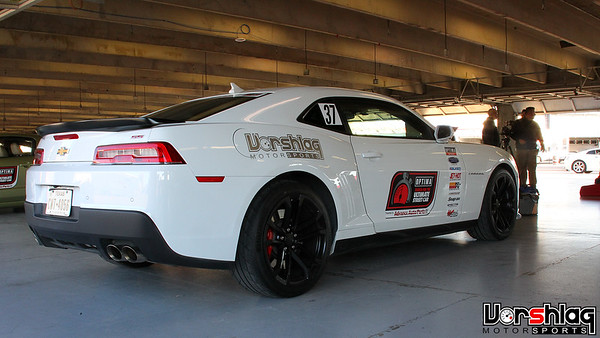 Long time racing buddy Doug Willie autocrossed his 2013 Camaro 1LE in F Street (and Optima!)
Long time racing buddy Doug Willie autocrossed his 2013 Camaro 1LE in F Street (and Optima!)
5th Gen 1LE's came with 20x10" fronts and 20x11" rear wheels, with 285mm tires at all 4 corners. This was compared to a 19x9" wheel on the 2011-14 Mustang GTs they raced against in F Street. The SCCA allows a +/-1" change in wheel diameter in Street class, keeping the stock widths and within 1/4" of stock offsets. Tire width was unlimited, so many 1LE racers jumped to 19x10" and 19x11" wheels with 305/30/19 or bigger tires. Even with a 200 pound penalty compared to the equivalent year S197 5.0L Mustang, and with similar power levels, the Camaro had a massive wheel width and tire width advantage. This helped these cars overcome their weight disadvantage, and the 1LE Camaros put the screws to the Mustang GTs for a few years in F-Street class.
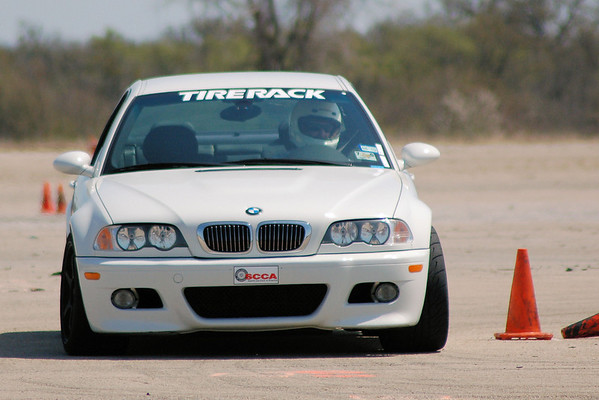 For some reason the SAC moved the E46 and E92 M3s to F-Street
For some reason the SAC moved the E46 and E92 M3s to F-Street
Then the SCCA allowed two generations of BMW M3s into F Street, and those car's better suspensions, lower weights, and some optional factory wheel offerings made them pretty strong there - which has pretty much made the pony cars obsolete in this class - for the time being.

The 6th gen Camaro 1LE might have a better shot in autocross (assuming it is classed in F Street) if GM offers a very wide wheel in stock form (1LE) again, allowing those racers to squeeze more tire under the fenders, to level the playing field (2017 Camaro 1LE comes with 285/30ZR20 front tires and 305/30ZR20 rear tires, so it sounds like 20x10F/20x11R wheels again). These 6th gen 2016+ Camaros are around 200 lbs lighter than the 5th gens (even the Z/28 model), have a strong 455 hp LT1 engine, better rear IRS, but somewhat limited visibility.
EASY HORSEPOWER FROM THE LS3: FULL LENGTH HEADERS
The best part of a 5th Gen Camaro SS is the drivetrain. If you are smart and picked the manual transmission SS you got a big 6.2L aluminum LS3 with 426 hp mated to a strong Tremec 6060 manual 6-speed transmission. The automatic equipped SS had a different V8 producing 400 hp - the L99. They are generally shunned for track and autocross use, as are the hot running supercharged 6.2L LSA supercharged V8s in the ZL1. The Z/28 came with a magical 7.0L LS7 V8, but these cars were fairly expensive and had some problem parts, namely the carbon ceramic brakes, which I will talk about below.

Our main tester "Scottish Joe" has been a customer for a few years and at our old shop we installed full length stainless steel American Racing Headers as the first mod we did. Of course I always tell pony car owners - DON'T DO POWER MODS FIRST! But they never listen. 
 
The 426 hp LS3 would seem to have enough power for track use, and it is quite good in stock form, but like most red blooded American males - and Scottish blokes - Joe wanted a bit more. Who can blame him? I did the same thing to our 2011 Mustang, and had a hunch the same ARH long tube headers would add a big chunk to low, mid range, and top end power to the LS3, just like on our Coyote V8.
 
The stock log manifolds are pretty heinous on the LS3, and going to a full length header adds the easiest power you are going to find on a 5th gen. They do take some time to remove but its nothing like a the 6-8 hour Coyote Mustang long tube install.
 
It only took us 3.75 hours to swap the stock manifolds for these 1-7/8" primary ARH long tubes and cats. Joe wanted to keep the stock Camaro exhaust after the cats, which is a bit restrictive, but I've seen much worse "cat-back" factory exhaust systems. At best there's another +10-15 whp left in a custom dual exhaust upgrade (that's what we saw on the Coyote 5.0L when we went from ARH long tubes + stock exhaust to a custom dual 3" exhaust).
 
We didn't cheat and run the Camaro without catalysts - that's a massive fine for any shop caught doing that to street cars. We chose the high flow cats from ARH to keep the emissions in check.

Once we got the headers installed we took the car to our local tuners, True Street Motorsports, where they did an initial dyno pull. It made 426 whp with the headers and existing K&N cold air kit. They then tuned it with HP Tuners using a conservative "road course / street tune" for 93 octane and achieved 437 whp and 423 wtq. It makes power everywhere and comes on very smoothly. Full length headers are the best bang-per-buck power modification on a modern V8 if you are going to be running the car on a road course.

Superchargers and other forced induction options can make huge power bumps on modern V8 cars - they work well for dyno queens, drag cars and hard parkers, but boost SUCKS on a road course. These systems always heat soak within "ones of laps", even with giant intercoolers, and there is no getting around that fundamental problem with blown V8s.
Even OEM supercharged V8s, the Mustang GT500, Camaro ZL1, Corvette ZR1 and C7 Corvette Z06, overheat quickly on track. I've seen C7 Z06 Corvettes overheat and go into limp mode in LESS THAN ONE LAP at tracks like COTA in the Texas summer heat. If your supercharged V8 isn't overheating on a road course, you are either: driving very slowly, you are blind, or your car doesn't have accurate gauges.
continued below
Last edited by Fair; 10-14-2016 at 08:20 AM.
|

10-14-2016, 08:18 AM
|
|
Senior Member
|
|
Join Date: Mar 2014
Location: Plano, TX
Posts: 160
Thanks: 6
Thanked 67 Times in 33 Posts
|
|

continued from above
FACTORY 5th GEN CAMARO BRAKE OPTIONS
The second best thing about a 5th gen Camaro SS: the brakes!
 
There were three different braking systems that came on the 5th gen Camaro V8 cars (again, we are ignoring the V6 cars). The SS came with 4-piston Brembo calipers and large diameter vented rotors at all 4 corners.

This uses a decent brake pad profile, good OEM style Brembo calipers, and decently sized rotors. The front rotor is a 355mm x 32mm (14" dia) vented rotor that weighs about 25 pounds. The rear is a 365mm x 28mm rotor (14.4" dia) that is 24 pounds. Rotors are under $100 each and you can even get rebuilt calipers for about the same price. These are appropriately sized and easily fit underneath 18" diameter wheels. Why on earth did GM slap heavy, gigantic 20" diameter wheels ("Twingos") on these cars? This was a Victim of Style.

The ZL1 came with larger front brakes but the same SS rears. The rotors were 14.6" diameter and the calipers were 6-pison Brembos. Are they needed? I don't think so, but they would help by adding a larger heat sink with the bigger rotor. Is it worth $4150 to upgrade the SS front brakes? Not in my book. There are better Motorsport level brake options at lower prices.

This is a popular 6-piston caliper in GM's parts bin, similar to the one used in the Gen II CTS-V. The 2-piece front rotor is also pretty slick but it isn't light, and at $400 each, it's not cheap to replace. The larger rotors limit you to 19" wheels, but so do some inboard physical constraints in the front spindle, so 18" wheels are difficult to run on these cars (without grinding on the front spindle).
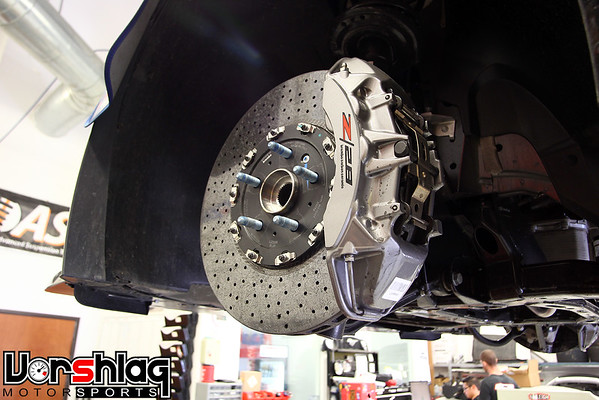
The Z/28 came with Carbon Ceramic Matrix brakes (CCM), but you probably do not want these. Why? Replacement rotors can cost up to $2500 each and a fast driver can kill CCM rotors in as little as one track weekend. Replacement CCM brake pads can cost $1000/axle (just priced some for a C7 Z06 customer from a local GM dealer). And the pads and rotors still DO wear out, and they can wear MUCH more quickly if you don't watch out.

Similar to how Carbon/Carbon brakes you see in Formula1 cars, once these Carbon Ceramic Matrix rotors reach a certain critical temperature they start to wear VERY quickly, lose braking effectiveness, and just stop working. They can even fail catastrophically, especially if they are chipped. Iron rotors can get super hot yet still work, as long as the brake fluid doesn't boil. They don't crack if you look at them funny, and are super rugged. And much more cost effective.
 Image of a Carbon Ceramic Matrix brake rotor after 10 track days
Image of a Carbon Ceramic Matrix brake rotor after 10 track days
We have talked to the AP/Essex folks at trade shows and they do a brisk business selling iron based brakes for sports cars that originally came with CCM options, like the ZR1, Z/28, GTR, GT3 and more. Once someone gets fast enough on track, they can and will kill $6,000-12,000 worth of rotors in a weekend or two. Then they will gladly pay AP for iron brakes that have more reasonable wear and replacement costs Scroll down on this page to read more about the problems with Carbon Ceramic Brakes.
Potential Pitfalls with Carbon Ceramic Discs- Oxidize at track temperatures
- Low airflow and rapid heat transfer
- Expensive, limited range of compatible brake pads
- Poor feel
- High replacement disc cost
- Damage-prone
- Splinters (carbon splinters in your skin!)
- Greater sensitivity to burnishing/bedding-in
To summarize - Carbon Ceramic Matrix brakes are a gimmick for Rich Pimps, and of little value to non-millionaire track drivers. Yes, they are lighter than iron brakes, and if you are a hard park queen who never drives their car, these might last the 90K miles claimed. But if you will be tracking your car and drive faster than Mr Magoo, CCM brakes should be avoided if at all possible.
"MINOR SHUNT" + REPAIRS + BRAKE COOLING & PAD UPGRADES
As good as the factory 4 piston Brembos are on the SS, they are not infallible if you run less than ideal pads and/or fluid. We had been seeing Joe get faster at track events for a couple of years while he was running EBC green pads and some ding-dong brand of slotted rotors. I have never been impressed with EBC pads or faux-upgrade slotted rotors, and I warned Joe that he was on borrowed time. Our crew performed a quick track brake fluid flush and bleed on this car at ECR once after he had boiled the stock fluid, and again the next time he was in our shop for an HPDE inspection on the car back in 2014.

I noticed that his calipers had gone from Red to BROWN... which we call "BROWNBO" brakes. That's a condition when the calipers have been overheated so badly that the red powder coating gets cooked. That is well into the brake system "Danger Zone". I had been begging Joe years to do some sort of brake cooling and/or better brake pads after seeing this.
  Left: The factory red powder coating on the front Brembos. Right: "Condition Brownbo"!
Left: The factory red powder coating on the front Brembos. Right: "Condition Brownbo"!
I showed a brief glimpse of the brake cooling on Joe's 1LE last time, but did not mention why that was needed. Well there was an issue with brake heat at an HPDE event at ECR one day in 2015 and... this happened.
 
These are pictures he showed on Facebook, along with in-car video. Total brake system failure after so many warning signs were ignored. I'm guilty of the same thing - and never want that to happen to me or anyone! After too many spirited laps at this brake-intensive track, the pedal just went to the floor in a fast ~100mph braking zone (ECR, Turn 11).
Joe reacted well and went off straight (turning could have rolled the car), over the tire barrier and down a small hill. It ripped the front fascia off, did some minor cosmetic damage & popped some airbags. Surprisingly the car took the hit like a champ - nothing major was bent or mangled - and after a long 9 month hibernation, I begged Joe to bring us the car.
 
He was able to drive it to our shop, where we looked at it, took some pictures, and sent them to our friends at Heritage Collision. They quoted the work, we told Joe the numbers, and then I delivered the car to them for airbag + cosmetic repairs.
continued below

|

10-14-2016, 08:26 AM
|
|
Senior Member
|
|
Join Date: Mar 2014
Location: Plano, TX
Posts: 160
Thanks: 6
Thanked 67 Times in 33 Posts
|
|

continued from above
  Left: BEFORE Camaro SS front bumper cover. Right: AFTER with the ZL1 front end
Left: BEFORE Camaro SS front bumper cover. Right: AFTER with the ZL1 front end
We used this "opportunity" to upgrade a number of things in his braking system, exterior cosmetics, seats, and safety gear. The Heritage crew replaced the front SS bumper cover with a ZL1 version, along with the associated ZL1 lower lip and lower grill.

They did a superb job for the money charged (not an insurance repair) and replaced all of the airbags, airbag controllers, ZL1 front bumper cover, and ZL1 rear diffuser. We also did the brake cooling & suspension work shown below, then Brad detailed the car, buffed the carbon fiber-ish hood, and cleaned up the wheels. No more traces of mud from "the incident" and the Camaro looked better than ever.
 
We addressed the brake cooling issues by creating new 5th Gen Camaro brake backing plates with 3" inlets for cooling air. We made these by hand but scanned the final design for future production after some track testing.

These backing plates are fed by inlets in the ZL1 grill and the ZL1 brake cooling inlet ducts we sourced from GM. But like most factory "brake cooling" solutions, the inlet ducts just pushed air into the wheel well area and hoped it would reach the brake rotors. That's not good enough.
 
Our crew made these 3" oval duct adapters that fit onto the end of the factory plastic duct tubes. These give us something rigid to clamp the 3" brake cooling hoses to that protrudes into the wheel well area.
 
The images above show the 3" oval adapters in place and then with the 3" brake cooling hose attached to these + the brake backing plates.
 
This is the final result - proper brake ducting that force feeds high pressure air from the lower grill, through smooth OEM style ducting, into 3" high temp hose, then into the brake backing plate. The air is then pumped inside the opening of the 14" front rotor, around the front wheel bearing and through the vented rotor vanes like a centrifugal pump. This is how to cool brakes properly. No need for heavier 14.6" ZL1 2-piece rotors, or CCM Z/28 rotors, just proper cooling for the OEM iron brakes. We would need to test this later on track to validate their worth before moving forward with any of this as production parts.
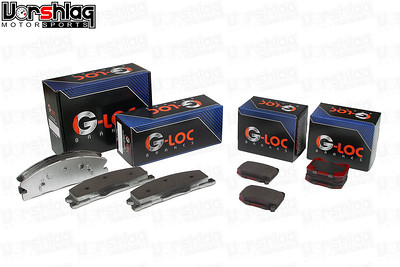 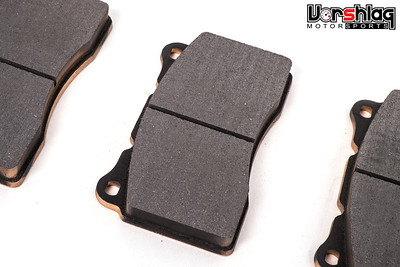
We also flushed out the RBF600 and went with a higher temp RBF660 fluid then upgraded the "EBC Green" pads to proper track pads using G-LOC R10 compound fronts and R8 rears. They are more heat resistant and have a higher braking coefficient but do make more dust and noise. That's the price you pay for proper brake pads.
continued below

|

10-14-2016, 08:27 AM
|
|
Senior Member
|
|
Join Date: Mar 2014
Location: Plano, TX
Posts: 160
Thanks: 6
Thanked 67 Times in 33 Posts
|
|

continued from above
CAMBER PLATES & SPRING CHANGES
While the above brake system upgrades were being done we were also developing a production version of our existing 5th gen Camaro camber plates.
 
This Camaro already had Bilstein PSS10 monotube inverted coilovers installed by a previous shop, from before Joe met Vorshlag. Like most PSS kits, these Bilsteins came with a "hybrid" spring that is 60mm ID at the bottom and is larger at the top, to fit inside the OEM upper spring perch and strut top mount. Jason rated the spring (roughly 350 #/in with some rate variability) and we spec'd out a firmer rate from Hyperco (450 #/in straight rate 60mm springs - still a very reasonable rate for street use). We left the rear springs alone for the time being.

Having the OEM (upper) sized spring and factory top mount installed on this car let us develop both an OEM perch solution (with no change in ride height) as well as a coilover solution (for 2.25", 60mm and 2.5" ID coilover springs). The prototypes on Joe's car are polished aluminum units shown below but the production units are red anodized aluminum main plates and also red OEM perches. We made Joe's pre-production prototypes in March and have had to make two production batches of 5th gen plates since then - more popular than we had expected. Most have been sold for folks using the stock springs or OEM-style lowering springs.

Unlike most modern McStrut cars, the 5th gen Camaro has no bolt holes for attaching the stock top mount. Instead GM went old school and had a VW style "clamshell mount" that sandwiches the top mount above and below a hole in the strut tower.
 
We installed the firmer 450#/in Hyperco springs when we installed the camber plates and used a conservative -2.5° front camber setting for a mix of street, road course and autocross use. Joe isn't an autocrosser but he was out of the country for over a month and wanted us to test his car while he was gone, so we ran it at a couple of autocrosses (see below) over the summer to try to dial in the setup, before going to MSR-Cresson for some track testing in September.

We had high hopes that the firmer front springs and added camber would transform this 3800 pound V8 pony car into a more nimble cone carver and road course HPDE ride.
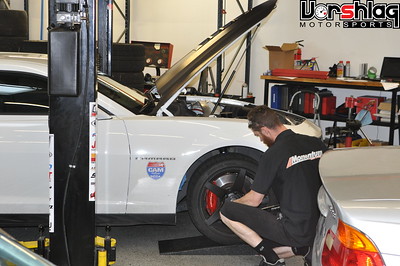 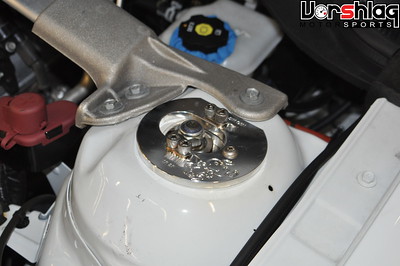
Shortly after making the pre-produciton set for Joe's 1LE, we made another polished set with custom engraving for a long time friend, CAM autocrosser and Optima racer Doug Willie's 2013 1LE affectionately named "Big Snoopy". This car had the OEM shocks and springs and needed camber badly. With these camber plates and 315mm Rival-S tires the car picked up a lot of speed and kept from eating the shoulders of the front tires.
RACING SEATS, HARNESSES & WHEEL TESTING
"The Incident" led Joe to listen to not only our suggestions of better brake cooling but also our calls for better safety gear. I had pushed hard for a semi-gutted interior and proper roll cage, after the air bags had been popped. Headliners and interior panels often get borked-up when the bags pop happens.

But I didn't win that battle. Joe insisted on keeping the interior (it was repaired) and supplied this Sparco harness bar for us to install instead. This unit is well made, and is fine for autocross use, but questionable at road course speeds. How will this bar deform in a real road course shunt into a hard object? Joe luckily only does HPDE events on Texas road courses, which are very safe; most turns here have 100s of yards of flat run off... so in this situation, it was acceptable. His "off" at ECR was one of the few times I've seen someone find a tire barrier on a Texas track. It is the exception, not the norm, like we see on many East coast tracks (which all seem to be lined with concrete walls, trees or armco).
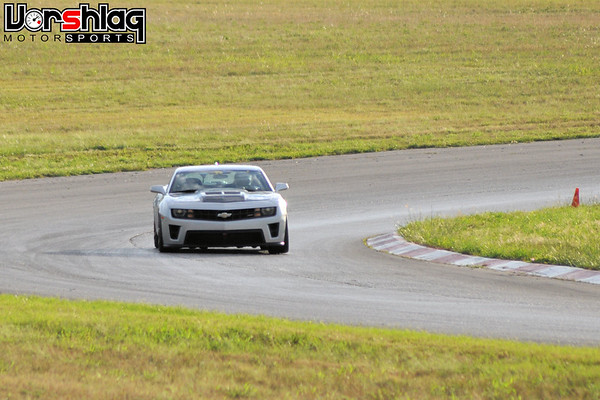 Typical road courses in Texas have no trees, tire walls, barriers, or other things to hit
Typical road courses in Texas have no trees, tire walls, barriers, or other things to hit
Before the 2015 "off" Joe had purchased a pair of Cobra Suzuka GT racing seats from us. These are composite (Kevlar) FIA approved fixed back seats suitable for racing, and they CAN be used for street use - if you install them correctly + re-install the OEM seat belts.
 
Joe brought these to us when the car returned from the body shop and he had purchased some off-the-shelf brackets made for the 5th gen Camaro. These brackets included a lower bracket to bolt to the chassis (mostly), included sliders and side brackets that were made to fit "most" racing seats. The lower brackets were made of plate steel and were somewhat heavy, as shown in the weight above right (this is a 19 pound seat).
 
We installed these brackets with the Cobra seats per the instructions but also added provisions for the anti-sub harness anchors onto the lower steel plate. That laser-cut steel plate was PLENTY thick so it was appropriate. There wasn't a good place on the aluminum side brackets to add anchors for the lap belts so we added Schroth anchors in the floor.
continued below

|
 Posting Rules
Posting Rules
|
You may not post new threads
You may not post replies
You may not post attachments
You may not edit your posts
HTML code is Off
|
|
|
All times are GMT -5. The time now is 04:48 AM.
|




